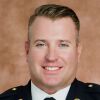Many organizations handle incidents like a parent supervising a first date. They drop the teenagers off at the movies, then wait around in the movie theater parking lot until the film ends. They assume one person can lead the incident, much like one parent overseeing this milestone moment — no need for both parents to waste their Saturday night! Command is far more involved, though; it demands more than just a single individual.
Bench strength on the fireground
For the past 50 years, the fire service generally has focused on appointing a single command officer to oversee most events. We know from FEMA’s National Incident Management System (NIMS) that the effective span of control is three to five units, yet we often turn a blind eye when an incident surpasses that limit.
| RESOURCE: Fire Command Ready: Building bench strength (eBook)
So, what does your command structure look like during the initial response? Is there sufficient command bench strength to support multiple operations on the fireground? In basketball, having a deep bench is crucial to winning games; it’s not feasible to rely solely on the starting five. Similarly, managing a large incident with only the initial response can be quite challenging.
Consider the players involved in determining your command bench strength. There’s the initial company officer who establishes command as a working command officer, as well as the shift supervisor/battalion chief who arrives to receive the transfer of command. For most incidents, this is it. Some organizations add a safety officer in the initial response. It’s a pretty standard deployment. This model probably works for about 85% of incidents, but what about the other 15%?
Expanding your bench
For generations, NIOSH has identified critical command factors that impact LODD. These factors include no command, lack of communication, and tactical errors, among others. By expanding your command bench, many of the common critical factors can be limited.
Bench positions include:
- Forward deployed command officer (tactical supervisor): This is a command officer who can be forward deployed into the hazard zone to supervise the work and validate the strategy. This person becomes the eyes for the IC. Yes, the initial company officer also provides eyes for the IC, but they are also engaged in the fight. It is critical that the forward deployed command officer remains hands off, with their eyes on the crews working.
- IC helper or aide: Many large departments already have this figured out by assigning drivers to the shift supervisors. If you are a smaller organization, you can achieve the same outcome by building the next layer of your bench. Utilizing mutual-aid and automatic-aid command officers gives you additional personnel to jump in and manage accountability of the radio for the IC.
- Safety officer: Standard ICS deployment has become an afterthought for many organizations. As we know, the safety officer is a valuable position. Redefining the position with a clearer job description is vital. If you are like us, we often assign an officer to safety but then forget about them. They mill around the incident and rarely know their responsibilities or rules for engagement. We rarely train on the roles and responsibilities of the safety officer. Improve this vital position by developing a more defined role and training on it.
- Staging officer: The staging officer represents the next command position that is seldom used. In rural areas, staging and water supply can significantly enhance your command bench. For these positions to be effective, clear expectations must be established, and regular training is necessary.
Your bench may also include air management and personnel accountability, in addition to drone or technological support through GIS or digital imagery.
Final thoughts
To be aggressive, we must be smart, proficient and efficient on the fireground. By adding depth to your command bench, your firefighters can operate in a more aggressive position while achieving greater levels of safety without hindering interior operations. As we know, fireground incidents are increasing in speed, which decreases the time we have to operate in the hazard zone. By establishing clear rules, expectations and training for all command functions, we can enhance the speed of operations to match the fireground.




